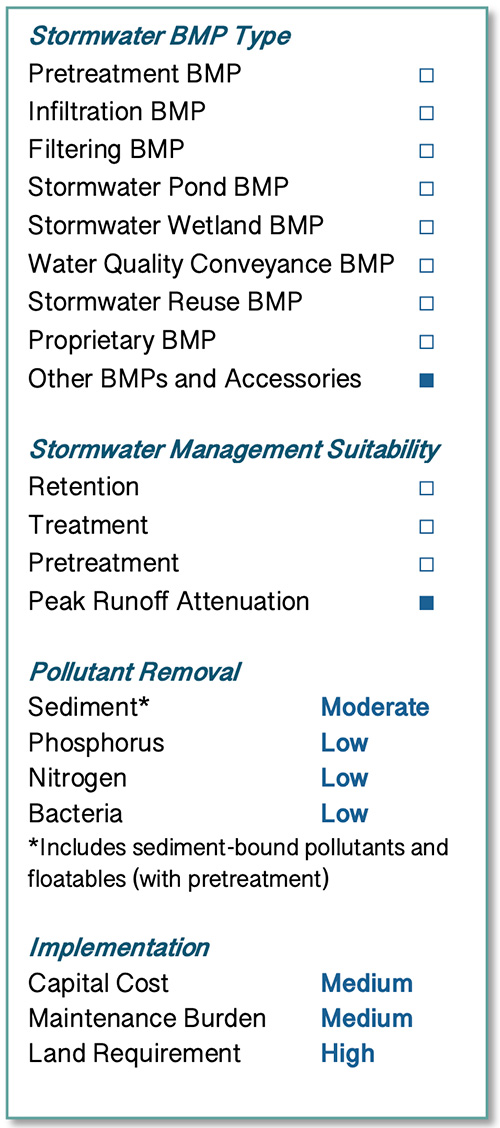Dry extended detention basins, also called “dry ponds” or “detention basins”, are stormwater basins designed to capture, temporarily hold, and gradually release a volume of stormwater runoff to attenuate and delay stormwater runoff peaks. Dry extended detention basins are typically designed as on-line systems and provide stormwater quantity control but only limited water quality benefit. The primary outlet structure of a dry extended detention basin is located at the bottom of the basin and sized to limit the maximum flow rate from the basin for the water quality storm. The higher stages of the basin attenuate the peak rates of runoff from larger storm events. Dry basins are designed to completely empty between storms, typically in 24 to 48 hours, resulting in limited settling of particulate matter and the potential for re-suspension of sediment by subsequent runoff events.
Dry extended detention basins differ from wet extended detention ponds, which provide a permanent pool and greater pollutant removal (see Stormwater Ponds section of this chapter). Dry extended detention basins are not suitable as infiltration or groundwater recharge measures, and therefore do not reduce runoff volumes and cannot be used to meet the Standard 1 retention or treatment performance criterion of this Manual.

